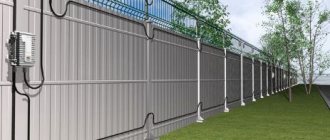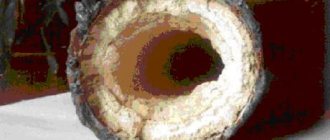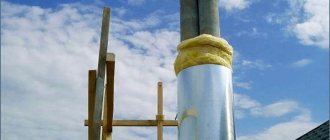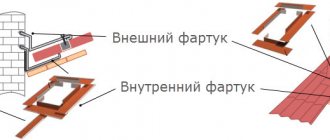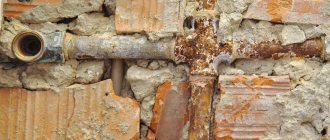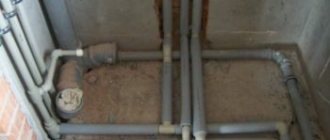A frame made of an aluminum profile (or aluminum frame) for a metal case is great: precise cutting of aluminum profiles, extremely simple assembly of the frame: one or two, and the body of the future device is already showing off at the exhibition.
But the frame remains beautiful as long as you are required to do no more than one or two cases per year. As soon as you want to move to a slightly more serial product, the aluminum frame immediately turns into a pumpkin problem.
Disclaimer
We in no way claim that a frame made of an aluminum profile for a metal case is a jamb of jambs and in general, don’t take a profile, ugh. No. This frame perfectly performs its functions, but to certain limits. We’ll tell you which ones now.
Typical situation: as a rule, the idea to build a device (or installation) on a frame made of aluminum profile and cover the device with casings is one of the first to arise.
Among the developers something goes like: “Let’s hurry up, we need to start selling, we’ll finish the details later,” and the basis for the body design is a prefabricated frame made from a profile. And when the device has already proven its right to exist, it’s time to think about scaling, that is, serious, completely “grown-up” production - problems begin, namely:
- the cost of the housing suddenly increases sharply;
- it turns out that the structure is not rigid enough;
- it turns out that the finished device is not transportable - partially or completely.
All these problems can be solved. But first you need to realize: the current version of your product is not a full-fledged serial product, as it seemed, but just a prototype
(also known as a
test sample
).
You can show this sample at exhibitions and even, with a certain level of finishing, sell it to your first customers. But there is no way to produce it in series: such a design is very limited in its suitability for scaling, and in some cases it is not suitable at all.
Andrey Gursky, designer
:— If you are making a bench sample (or a single one - only for internal use) or just a frame to “hang” the equipment and see how it works, then an aluminum profile frame is an ideal option. This is a profile of standard sizes, which will be cut with high precision, it is easy to assemble - you can do everything yourself; These are standard fittings that can be bought anywhere - brackets, hinges, etc.
But it's expensive. And if for one thing it’s normal to pay so much money for the frame, then for a series it’s very bad. And it can start with two copies - depending on who you are, the concept of serialization is very flexible; for other equipment, even ten machines can already be a large series.
There is an exit? Of course I have. An aluminum frame is not the only possible option. Let's try to look at them all - with examples.
PLEASE CHECK PRICES by calling (812) 931 5252 and (499) 390 5252
Dear customers! To avoid waiting for shipment at the warehouse, we ask you to pick up the selected goods only after receiving a notification to your email!
We try to save your time.
sells round aluminum pipes from warehouses in Moscow and St. Petersburg. To buy round aluminum pipes, as well as other products, please use the search by brand and size on our website or call
in Moscow
in St. Petersburg, 322-95-91.
From us you can buy aluminum round pipes of various sizes. The price for a round aluminum pipe is presented on the website. We carry out cutting of aluminum pipes to any size, retail sale, delivery to the address.
Duralumin pipe D16t, aluminum pipe AMG2, AMG3, AMG5, pipe AD31 is a hollow profile of different sections, made of aluminum and its alloys.
Aluminum pipe is distinguished by high performance characteristics: long service life, resistance to the destructive effects of corrosion and chemically aggressive substances, low weight and high strength.
The scope of application of aluminum pipes is quite wide - from road construction and oil production to public utilities. They are indispensable in the construction of ships, aircraft, cars and industrial equipment. They are successfully used in the manufacture of radiators, gas tanks, pipelines for fuels and lubricants, gas pipelines, water pipelines, heating systems, drainage systems and air ducts.
Aluminum pipe is made from the following grades of alloys: AMg2, AMgZ, AMgZS, AMg5, AMg60, AD31, AD35, AB, AD00, AD0, AD1, ADS, AD, AMTs, AMTSS, D1, D16, AK6, V95, the chemical composition of which must comply GOST 4784 and GOST 11069
You can buy aluminum pipes from us:
1.
Duralumin pipe D16. In another way, the material used to make this pipe is called duralumin or duralumin. This aluminum alloy with alloying substances (copper, magnesium, manganese, etc.) is particularly durable;
2. Aluminum pipes D16T. These pipes are made from the same duralumin, only heat-treated.
3.
Duralumin D16T is a material that is subject to heat treatment, hardening and aging. The popularity of pipes made of D16T duralumin is explained by their high strength (including static and fatigue strength) and fracture toughness. High levels of corrosion resistance are achieved by cladding pipes with pure aluminum;
4. Aluminum pipe AMg2M - has such characteristics as high ductility, thermal conductivity, resistance to aggressive environments and easy weldability.
Aluminum pipe is classified according to production method:
- pressed pipes made of aluminum and aluminum alloys in accordance with GOST 18482-79; cold-deformed pipes made of aluminum and aluminum alloys in accordance with GOST 18475-82; longitudinally welded pipes made of aluminum alloys in accordance with GOST 23697-79.
The standard provides for the following cross-sectional shapes of aluminum pipes (round, square, rectangular and profile). Moreover, round aluminum tubes can be thick-walled or thin-walled.
Another criterion for the classification of aluminum pipes is the type of heat treatment, according to which the pipes are divided into: annealed (m); hardened and artificially aged (T1); hardened and naturally aged (T); without heat treatment.
Aluminum tube has high ductility, corrosion resistance and thermal conductivity. The material used can be easily machined and welded in various ways. It is hygienic and can be successfully used in a wide temperature range when exposed to aggressive environments.
Can you tell which aluminum sheet is used in each picture? Are you at a loss? Let’s try together to understand the main aluminum alloys and their applications.
First, let's look at the condition of aluminum sheets.
GOST 21631-76 defines 7 possible states of the sheet, we will focus only on the most common ones:
1) annealed - M;
Soft aluminum sheet, easy to deform.
2) semi-hardened - H2;
The aluminum sheet is more rigid than in the “M” state and is also easily deformable (withstands bending up to 90 degrees). It holds its shape well, its rigid state prevents the formation of dents, therefore it is most often used in thermal insulation of pipes.
3) cold-worked - N;
Cold hardening is a method of hardening metal using cold deformation (additional rolling on a machine).
4) hardened and naturally aged - T;
Solid aluminum sheets. More difficult to process (it breaks when bent at 90 degrees). Used in parts and assemblies with high loads.
Alloys 1105, VD1.
Technical aluminum sheet is used as an insulating and finishing material.
The low weight of the sheet and its flexibility ensure low costs and convenience when carrying out insulation work. The most commonly used alloys are 1105AN2, VD1AN2. AD1N2 alloy is also used for thermal insulation.
Alloys of the aluminum-magnesium group: AMG2, AMG3, AMG5, AMG6.
Acid-resistant aluminum sheet is made from aluminum alloyed with magnesium and manganese.
The AMg2M, AMg3M, AMg5M, AMg6M grades have high anti-corrosion characteristics and are perfectly weldable. Therefore, they are widely used in the production of welded containers, fuel tanks and other parts in aircraft construction. Excellent for both industrial shipbuilding and private production of boats, boats, catamarans.
Alloys AD1, A5.
Food grade aluminum sheet is made from grades of primary aluminum - cold-worked (A5N, AD1N), semi-hard-worked (A5N2, AD1N2), annealed (A5M, AD1M).
AMC alloy.
Sheets made of aluminum grade AMts have increased ductility and are easily deformed. They are used in a semi-hardened and cold-worked state in the automotive industry for the manufacture of radiators, frames, and rivets. Can also be used in food production, but without direct contact with food.
Alloys D16, D19, V95.
D16AM is annealed duralumin with normal cladding.
D16AM is a high-strength type of duralumin and is resistant to external influences. D16AM does not become brittle in the cold, therefore it is used in conditions under which the use of other types of steel becomes impossible. D16AM alloy sheets are most widely used in the production of various parts manufactured by stamping.
D16AT - made from an aluminum alloy with alloying elements, the main of which is copper. The alloy is used for the manufacture of bent profiles. The advantage of D16AT is that a part made from such an alloy is immediately hard, without additional heat treatment.
D16T – duralumin, made from an alloy of aluminum with copper and manganese.
D16T has good ductility and increased fatigue characteristics. The range of applications of the alloy is wide. D16T is used in construction, aircraft manufacturing, shipbuilding, furniture production and other industries.
B95 is a durable aviation alloy. It is used for wing top skins (plates, sheets), stringers (bent sheet and pressed), beams, struts and other elements of the fuselage and wing of modern aircraft (TU-204, Il-96, Be-200) and other highly loaded structures operating in mainly for compression.
Alloys D16, V95 cannot be welded by argon-arc and gas welding. Therefore, rivet joints are most often used for joining semi-finished products (thick sheets, profiles and panels).
Aluminum pipes have many advantages, including high resistance to aggressive substances, long service life and ease of installation. An important advantage is the low cost of the products. Due to these advantages, pipes are used in various fields.
Aluminum is a popular metal that has many advantages and is used in various fields. Aluminum pipe was used to construct sewer and water supply systems back in the days of the Soviet Union.
Aluminum products have created quite serious competition with their cast iron and steel counterparts. The main advantage of pipes is their high resistance to corrosion. As a result, their service lines increase significantly.
Recently, the popularity of aluminum pipes has increased. Today, the market offers a wide range of such products from various manufacturers.
Greenhouse construction - glazing
In this case, ordinary glass 4 mm thick is used to cover the greenhouse. If desired and have sufficient funds, it can be replaced with hardened or triplex. The latter is a “pie” of two or more layers of glass, between which there is a film. In the event of a strong impact, such greenhouse cladding will not fly into small fragments - they will all remain on the triplex film.
Step 1. Unpack the glass and check its integrity.
Unpacked glass
Step 2 : Start fastening from the roof. Glue the lower and upper ends of the glass sheet with a U-shaped rubber profile and place it between the grooves of the rafters. For comfortable holding, use vacuum suction cups with handles. Then tape the outside of the glass with rubber tape to secure and seal.
If the roof structure does not provide a profile that prevents the glass from “sliding down”, add it after completion of work Using a vacuum suction cup for glass
Step 3: Repeat the previous step with all the remaining glass for the greenhouse roof. Be especially careful and use a stepladder. Don't forget to glaze the windows.
Step 4. Glue the grooves in the aluminum profile of one of the sections of the greenhouse wall from the inside with a self-adhesive rubber U-shaped profile.
The grooves in the racks are glued with a rubber U-shaped profile. Gluing the rubber profile
Step 5. Take a sheet of glass intended for one section of the greenhouse wall and carefully insert it into the groove and lean it against the profile. The last one and the previously laid rubber seal will play the role of a kind of internal glazing bead that fixes the glass.
Installing the first sheet of glass
Step 6. Finally secure the glass using self-adhesive rubber tape to secure and seal the glass from the outside. Styling slowly, do not allow wrinkles or air bubbles to form.
The glass is finally fixed using self-adhesive rubber tape for fastening and sealing
Step 7: Repeat the previous three steps with the remaining greenhouse side wall sections.
Step 8. Proceed to glazing the ends. Here the process will be similar, but more complex due to the presence of a “kerchief” at the top of the glass.
Glazing of the greenhouse end Another photo of the end glazing
Step 9. Check whether there were any errors during glazing and whether the sealing tapes are correctly attached.
Almost completed greenhouse made of glass and aluminum. All that remains is to add doors and remove construction debris
If everything is in order, then the aluminum frame greenhouse is ready. All that remains is to form beds and paths inside, install an irrigation system and begin growing seedlings and agricultural crops. If you perform all actions according to the instructions, the greenhouse will decorate your site for 20, 30 or even more years.
Product advantages
Aluminum pipes are widely used in various construction fields. Thus, a large number of pipelines used for oil production are made from these structures. This popularity lies in the fact that aluminum is highly resistant to aggressive substances.
Among the main advantages of aluminum pipes are: Not subject to corrosive processes. This advantage is only present in those pipes that are more than 95% aluminum. If we are talking about an alloy, then the situation here is somewhat different. Due to additives, products can rust, which significantly reduces their service life.
To further protect structures from the negative effects of moisture, they are coated with Vaseline. Light weight. Due to the low density of aluminum, products made from it weigh relatively little. This simplifies the loading, transportation and installation of aluminum pipes. So you can easily build a pipeline from such pipes with your own hands. Resistance to aggressive environments and chemicals.
Thanks to these advantages, pipes can last in the ground for several decades. During this time, the pipeline does not lose its strength and performance properties. High throughput. The inner walls of aluminum pipes have a smooth surface, which ensures high permeability of various substances. Aluminum pipes are the best option for constructing sewer and water supply systems. Water moves faster through such pipelines.
This also significantly reduces the risk of blockages and traffic jams.Easy to process. If necessary, aluminum pipes can be easily painted and finished, which allows you to disguise the pipes in the house, as well as further protect them from corrosion. The presence of such advantages explains the high popularity and widespread use of pipes in various industries. It is worth considering that such products must consist of 95% or more aluminum.
Assortment
Aluminum pipes are produced in both regular and unmeasured lengths. In the second case, their length is 1.5-11.8 m if the diameter is in the range of 10-75 mm, and with a diameter from 76 to 220 mm, the length will vary from 5 to 12.5 m. Products with measured lengths have the following the same extreme parameters as unmeasured pipes. The difference is that rolled products have certain dimensions, the difference between which can be 100 mm.
The production of products of multiple measured lengths takes into account an allowance of 5 mm when cutting. The maximum length error for measuring aluminum pipes with an outer diameter of 10-75 mm is no more than 30 mm. Pipe products with a diameter of 76-220 mm may have a deviation in one direction or another of no more than 20 mm.
The weight of 1 meter of aluminum pipe depends on the diameter and wall thickness, and the alloy grade can also affect this indicator. Typically, to calculate the theoretical weight of 1 meter of rolled pipe, the default density of B95 aluminum is 2.85 g/cm. To more accurately calculate the weight of aluminum pipes from other grades of aluminum, you need to use already known coefficients, which can be found in a special reference book.
Disadvantages of aluminum products
In addition to the advantages, aluminum pipes have some disadvantages:
Presence of carcinogenic properties. As a result of research, it was determined that aluminum, with prolonged exposure to the human body, can lead to the occurrence of malignant tumors. Therefore, recently they began to remove aluminum pipes from the construction of pipelines that are responsible for supplying water.
This problem can be solved using various impurities. Of course, as a result, this will reduce the performance properties of the products. Negative impact of low temperatures. When exposed to low temperatures, the surface of the pipes may become deformed.
Therefore, laying a pipeline in the ground must be approached very carefully. Utility lines must be located below the ground freezing level. If this is not possible, then experts recommend using an additional thermal insulation layer.
Of course, aluminum pipes have few disadvantages, especially when compared with the advantages. But you shouldn’t forget about them when choosing products. This especially applies to the scope of their application and the features of pipeline laying.
We choose a place and arrange the foundation
The location for the future greenhouse should be well illuminated by the sun, have an even topography and be at least 1.8 m away from other structures, otherwise there will be difficulties with installation. If the greenhouse is long, it is located from west to east, and ventilation vents are installed in the southern slope of the roof.
Although the greenhouse is not such a massive structure, and aluminum is not subject to corrosion, you cannot do without a foundation and it must be done according to all the rules. It increases the rigidity of the structure, relieves it from wind loads, and prevents the appearance of white deposits on the aluminum profile at the point of contact with the ground.
Choose a place to build a greenhouse so that no shadow falls on the structure
The most reliable option is a strip foundation. To equip it, you need a trench with a depth equal to the level of soil freezing. At the bottom of it we place what is more accessible - crushed stone wedges or sand; the compacted cushion should have a thickness of about 10 cm. Before pouring the concrete, we install the formwork and lay the reinforcement. When the poured concrete begins to set, we insert metal elements - anchor bolts, brackets or something else to secure the frame to the base.
You can reduce the cost of building a foundation by installing racks, for which:
- We dig holes around the perimeter of the future house at a distance of 1 m from each other, arrange a cushion of sand and crushed stone, and install the formwork. Here the boards will be completely replaced by roofing felt.
- We lower the aluminum posts into the hole, and around them we place 3 pieces of round reinforcement vertically and weld a horizontal rod to them to ensure rigid fixation.
- The next step is pouring concrete.
Construction of a frame for a greenhouse
An even cheaper option is a wooden foundation. It has no other advantages other than a low price, and a significant drawback - an expensive aluminum greenhouse standing on such a foundation is like a “colossus with feet of clay.”
Type of material
Today there is a wide range of aluminum pipes on the market.
They can have different cross-sections, lengths, and the quality of the metal used. As for manufacturing methods, here we can note: Cold deformation of the surface. For the production of pipes, an aluminum pipe is used, which can be calibrated and stretched during the production process.
The result is a pipe with the required internal and external diameters. This technology is the most practical. The only drawback is the high cost of production. Pressing. An aluminum billet is passed under high pressure through a die, which has certain dimensions. During the production process, the billet is heated to a certain temperature.
The resulting pipe can be easily anodized and is highly resistant to mechanical damage. Welding. To make a pipe using this method, you need to take an aluminum sheet of the required length and thickness. During the production process, the workpiece is given the desired shape, and its sides are welded together. To give the product strength, the welding site is subject to hot tempering.
This method is very popular and is widely used for the production of aluminum structures. Pipes are also classified by wall thickness. So, they can be thin-walled or thick-walled. The first type of material has a wall thickness that does not exceed 0.5 cm. As for thick-walled products, here this parameter is 0.5 cm or more.
Features of packaging, transportation, storage and labeling
All aluminum pipes with a diameter of no more than 60 mm are bundled. They should have a label attached with markings that provide information about the grade of metal, batch number and other nuances.
On the edge of any thick-walled pipe with a diameter greater than 60 mm, it is necessary to extrude or mark with paint such data as alloy grade, metal condition, batch number and quality control mark from the manufacturer.
Thin aluminum pipes that are wound into coils must be fixed with wire in at least three places. An icon with exactly the same information as in previous cases is attached to already packaged products. You should know that bobbins are returnable containers.
Areas of application
Aluminum pipes are very popular. The peculiarity is that aluminum does not require maintenance. Products made from it are very easy to install and transport.
The affordable price of aluminum pipes is also important. As for the scope of application, it is worth noting here: Agriculture. Aluminum products are widely used for constructing various drainage systems.
This is due to the fact that the metal is highly resistant to water and has a long service life. It is also resistant to agricultural crops. Oil production. Aluminum pipes are resistant to aggressive chemicals without losing strength and performance properties. The pipeline also has a high throughput, which eliminates the risk of blockages and traffic jams. This greatly simplifies the maintenance of the system throughout its entire service life. Ventilation system.
Aluminum pipes are easy to deform, drill and cut. This greatly simplifies the installation of the ventilation system. Sewerage. Products made from this metal are immune to the negative effects of aggressive substances that are present in wastewater. This allows you to build a durable and reliable system that will serve for a long time.
When installing an external system externally, it is worth remembering that under the influence of low temperatures, aluminum can deform and lose its performance properties. Among other things, aluminum pipes have an aesthetic appearance. This makes it possible to use them as various decorative elements. So, these could be railings and other structures. Metal easily matches any interior or exterior.
Installation of aluminum pipeline
In the process of laying an aluminum pipeline, there may be a need for additional processing of the pipes. So, this applies to trimming, deformation and other processes.
To solve these problems, special tools are used: Bending. Pipe bending is carried out using special machines. They are equipped with nozzles that have different diameters. This allows you to work with pipes of various sections. Welding. This process is carried out by melting or pressure.
Melting is used outside industrial equipment. The process is carried out using arc or electron beam welding. Argon arc welding is very popular. In this case, the electrode is used as a material for the seam.
In the future, the seam can be further processed, which can significantly increase its strength. Pipe connections are often made using special couplings and rubber gaskets. Cutting. To get a pipe of the required length, you need to cut it using a grinder and a set of circles. Drilling. If necessary, an aluminum pipe can be easily drilled using a conventional drill and a suitable drill bit. You need to approach the laying of the pipeline very carefully. If we are talking about external laying in the ground, then you will have to make a sand cushion.
This will prevent deformation of the pipeline. Also, do not forget about additional thermal insulation, which will prevent the destruction of products under the influence of low temperatures. Before installing the pipelines, it is necessary to carry out preparatory work. The joints must be smooth and clean. This is especially true for elements that can be cut.
The strength and reliability of the pipe connection will depend on the preparation stage. The process of selecting materials is also important. Experts recommend paying special attention to external inspection. The surface of the products should not have cracks or other defects that could lead to destruction of the pipeline during operation. It is best to opt for products from well-known and trusted manufacturers.
When purchasing material, it is worth checking the availability of appropriate certificates for products, which act as a guarantor of their quality. Aluminum pipe, due to its qualities, is a fairly common building material. It can be used in the construction of various pipelines, drainage and ventilation systems, as well as for the manufacture of various structures. How to choose the right pipes, join and lay pipes, read on. Aluminum pipes
Technical requirements
According to the standards, a rectangular pipe on the surface should not have:
- corrosion;
- surface cracks;
- material delaminations.
But at the same time, products with small scratches and spiral marks that remain after stripping and finishing the material are allowed. Lighter or darker spots than the rest of the pipe. Each rectangular and square pipe must have an even cut. If the diameter of the product is more than 32 mm, it is necessary to remove burrs from the cut surface that appear during the cutting process of the material. If the product has been hardened, there should be no burn marks on its surface.
If a rectangular or square tube is sent to the buyer in a bundle, each product must be created from the same alloy and undergo the same processing.
Areas of use of aluminum pipes
Pipes made of aluminum have the following positive qualities:
resistance to corrosion. This factor significantly increases the scope of use of pipes and their service life; low weight, which is reflected in the ease of delivery of pipes and their installation; resistance to chemicals and aggressive environments. Thanks to this factor, the pipes can be used for laying underground pipelines; high permeability.
Thanks to the smooth internal surface, aluminum pipes can pass more liquid than pipes made from other materials of the same diameter; the possibility of processing. Pipes can be painted, sewn up with any materials, mounted in a wall, and so on. Any method will not have a negative impact and will not reduce the period of their use.
The positive characteristics of aluminum products determine the scope of their application. Pipes made of this metal can be used:
- for the construction of water supply, drainage, heating, ventilation systems, both domestic and industrial; for the construction of drainage systems; for the construction of storm sewer networks; for laying pipelines in the oil production and oil processing industries; for insulating electrical cables; for the construction of building frames; for construction gazebos, benches, greenhouses and other small architectural forms.
Greenhouse frame made of aluminum pipes
Pipe making methods
In modern production, the following methods for manufacturing aluminum pipes are used:
cold deformation.
A pipe with specified parameters is made from an aluminum circle by drawing and subsequent calibration. This method makes it possible to produce pipes with precise dimensions, including minimum diameters and high quality. The main disadvantage is the high cost;
Cold deformation pipe manufacturing technology
- pressing. Heated aluminum billets are passed through a special press with specified parameters. Pressed pipes are characterized by increased resistance to mechanical stress;
Production of pipes by pressing method
welding An aluminum billet with specified dimensions is bent into the shape of a pipe.
The ends of the workpiece are welded together. Pipes made by welding are most susceptible to cracking under high pressure or mechanical stress. Therefore, it is recommended to use them exclusively for domestic purposes and within reach for inspection and repair work.
Pipe production by welding
Selection of basic parameters
Aluminum pipes can be round, square, rectangular:
- round and oval pipes are mainly used in the construction of pipelines and ventilation systems; square and rectangular (profile) pipes are used for laying cables, constructing building frames, and constructing various structures.
Various shapes of aluminum pipes
Before constructing any structure, you should also take into account such parameters as:
- diameter of the pipe used. This parameter is of particular importance during the construction of sewerage systems, water supply, and so on, since the throughput of the system; the wall thickness of the aluminum pipe depends on the diameter. The size of the maximum load depends on this parameter, which is of fundamental importance when laying pipelines underground or constructing various structures.
Main parameters of aluminum pipes
Each type of pipe is manufactured in accordance with GOST, which also regulates the standard dimensions of manufactured products. So:
- cold-deformed aluminum pipes must comply with GOST 18475 - 82; extruded pipes are manufactured in accordance with GOST 18482 - 79; welded pipes comply with GOST 23697 - 79.



